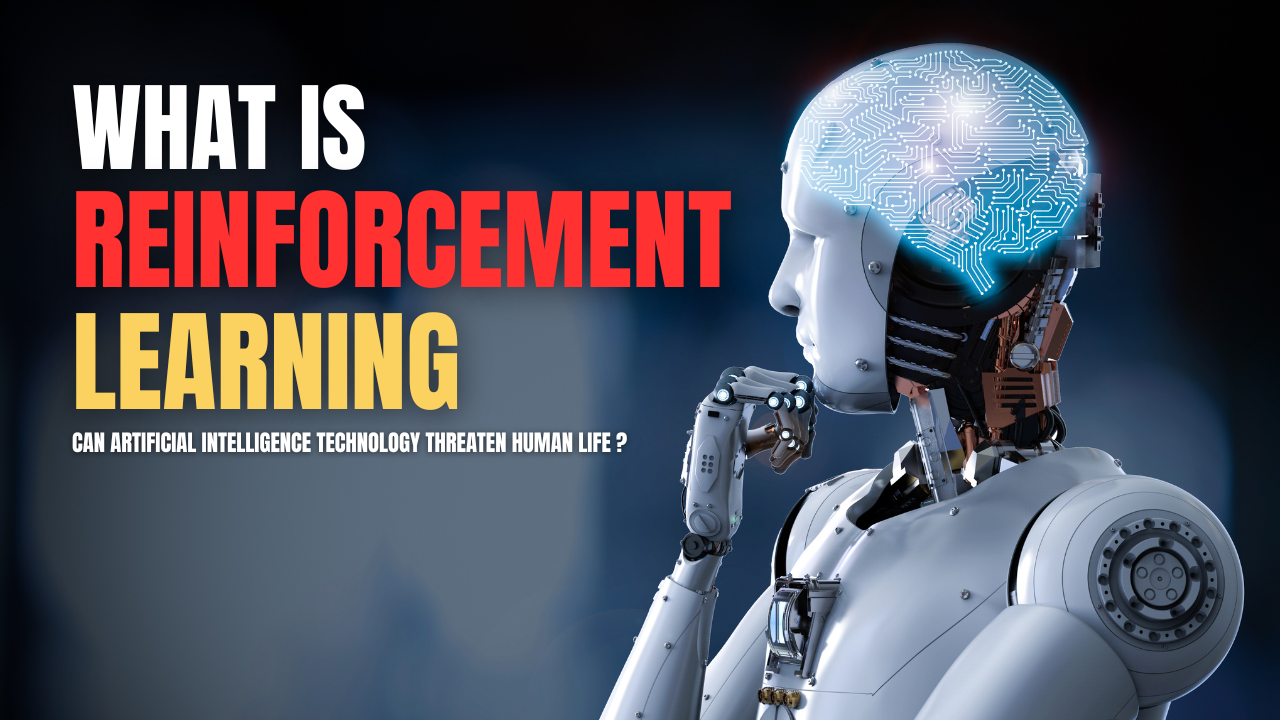Table of Contents
- Introduction
- Fundamentals of Reinforcement Learning
- Applications of Reinforcement Learning
- Advances and Techniques in Reinforcement Learning
- Ethical Implications and Challenges
- Future Perspectives and Research Directions
- Summary
- Frequently Asked Questions (FAQs)
Introduction

Reinforcement learning is an exciting field of study in artificial intelligence that focuses on developing algorithms capable of learning and making decisions through interaction with an environment. Its application in various domains, such as gaming, robotics, and autonomous vehicles, has revolutionized technological advancements. In this article, we will delve into the fundamentals of reinforcement learning, explore its applications in AlphaGo and autonomous vehicles, discuss its significance in robotics and smart home automation, highlight advances and techniques, address ethical implications, and examine future perspectives and research directions.
Fundamentals of Reinforcement Learning
Definition and Key Concepts
Reinforcement learning can be defined as a type of machine learning where an agent learns to take actions in an environment to achieve a goal by maximizing rewards and minimizing penalties. Key components of reinforcement learning include the agent (the learner), the environment (the context in which the agent exists), and actions (the choices the agent can make).
Markov Decision Process (MDP)
The Markov Decision Process (MDP) framework is frequently employed in reinforcement learning. MDP models the environment as a set of states with distinct transitions between them, and the agent takes actions to navigate through these states. Actions are chosen based on the agent’s policy, a set of rules dictating action selection. The policy is often optimized using value iteration, which involves estimating the value of each state.
Q-Learning and Temporal Difference (TD) Learning
Q-learning is a popular algorithm used in reinforcement learning. It estimates the value of actions in a given state, known as the Q-value, which aids in decision-making. Temporal Difference (TD) learning, on the other hand, focuses on updating Q-values using the Bellman equation – a mathematical equation that relates the value of a state to the values of its neighboring states.
Applications of Reinforcement Learning
AlphaGo: Defeating Human Champions
The monumental success of AlphaGo, developed by DeepMind, showcased the immense potential of reinforcement learning. AlphaGo employed the Monte Carlo Tree Search (MCTS) algorithm, which simulates numerous possible moves to determine the best course of action. The use of deep reinforcement learning and neural networks in AlphaGo further enhanced its gameplay capabilities.
Autonomous Vehicles: Navigating the Future
Reinforcement learning plays a vital role in the development of autonomous vehicles. It enables cars to perceive their surroundings, make informed decisions, and control their movements. Perception, decision-making, and control aspects rely on reinforcement learning algorithms, allowing autonomous vehicles to navigate complex roadways while ensuring safety and efficiency.
Robotics: Enhancing Automation
Reinforcement learning has revolutionized robotics applications by enabling machines to learn and adapt to new tasks. Task planning and manipulation become more efficient using reinforcement learning techniques. However, real-world challenges, such as dealing with dynamic environments and maintaining stable control, pose ongoing research efforts.
Smart Home Automation: Simplifying Daily Life
Reinforcement learning finds practical application in smart home automation systems, offering personalized and adaptive solutions. These systems utilize reinforcement learning algorithms to balance user preferences, such as temperature and lighting, with energy efficiency. This technology simplifies daily routines and enhances comfort.
Advances and Techniques in Reinforcement Learning
Deep Reinforcement Learning (DRL)
Deep Reinforcement Learning (DRL) is a subfield of reinforcement learning that combines deep neural networks with RL algorithms. This powerful fusion enables agents to learn directly from raw sensory input. DRL has achieved remarkable breakthroughs in various domains, including gaming and control tasks.
Policy Gradient Methods
Policy-based RL algorithms, as opposed to value-based ones, learn policies directly through gradient ascent. Policy gradients involve updating the model’s parameters to maximize expected rewards. Actor-Critic architectures, which combine policy and value functions, have proven effective in achieving stable learning.
Multi-Agent Reinforcement Learning (MARL)
Multi-Agent Reinforcement Learning (MARL) deals with scenarios where multiple agents interact in a cooperative or competitive manner. Challenges in MARL include coordinating actions between agents and finding optimal strategies. Applications range from social simulations to multi-robot systems, opening up vast opportunities for research and innovation.
Ethical Implications and Challenges
Ethical Considerations in Reinforcement Learning
As reinforcement learning algorithms make decisions, it is crucial to ensure transparency and interpretability. Understanding the rationale behind decisions becomes essential, especially in critical applications like healthcare and finance. Addressing bias and fairness concerns during training and decision-making processes is also significant.
Safety Challenges in Reinforcement Learning
Reinforcement learning algorithms sometimes face safety challenges due to a balance between performance and precaution. Catastrophic exploration, where an agent unintentionally causes damage in its environment, is particularly concerning. Research efforts focus on developing mechanisms to ensure safe behavior within complex environments.
Future Perspectives and Research Directions
Open Problems in Reinforcement Learning
Several open problems persist in reinforcement learning research. Long-term planning and hierarchical RL aim to improve decision-making capabilities over extended time horizons. Enhancing sample efficiency by reducing the number of interactions required for learning is another area of exploration. Additionally, generalization and transfer learning in RL remain challenging research objectives.
Interdisciplinary Approaches to RL
Reinforcement learning can greatly benefit from interdisciplinary collaborations. Combining RL with other AI techniques, cognitive science, and neuroscience can offer new insights and innovative approaches. Collaborations across these domains can pave the way for breakthroughs and advancements in the field.
Summary
In summary, reinforcement learning has emerged as a powerful tool, affecting diverse domains such as gaming, autonomous vehicles, robotics, and smart home automation. Its fundamentals, advancements, and techniques provide a solid foundation for future developments. However, ethical considerations, safety challenges, and open problems require careful attention and further research to realize the full potential of reinforcement learning.
Frequently Asked Questions (FAQs)
- What is the difference between supervised and reinforcement learning?
- Supervised learning involves training models to make predictions based on labeled examples, while reinforcement learning focuses on training models to maximize rewards and minimize penalties through interaction with an environment.
- How does reinforcement learning differ from other machine learning approaches?
- Reinforcement learning distinguishes itself from other machine learning approaches by its emphasis on learning through trial and error, without explicit supervision. It involves decision-making in dynamic environments and optimizing long-term cumulative rewards.
- Can reinforcement learning be applied to industries beyond gaming and robotics?
- Absolutely! Reinforcement learning has already found applications in finance, healthcare, recommendation systems, and many other industries. Its versatile nature allows for adaptability to various problem domains.
- Are there any ethical concerns associated with reinforcement learning?
- Yes, ethical concerns exist in reinforcement learning, particularly in transparency, fairness, and interpretability of learned policies. Ensuring ethical decision-making, addressing bias, and promoting transparency are important considerations.
- What are the current limitations and potential risks of reinforcement learning?
- Reinforcement learning faces challenges such as sample inefficiency, safety trade-offs, and generalization. Potential risks include unintended consequences, such as learned policies exploiting vulnerabilities or exhibiting biased behavior, which necessitate ongoing research and mitigation efforts.
Follow us on Instagram @digitalmonkey.in
More Interesting blogs to read – What is Metaverse?




